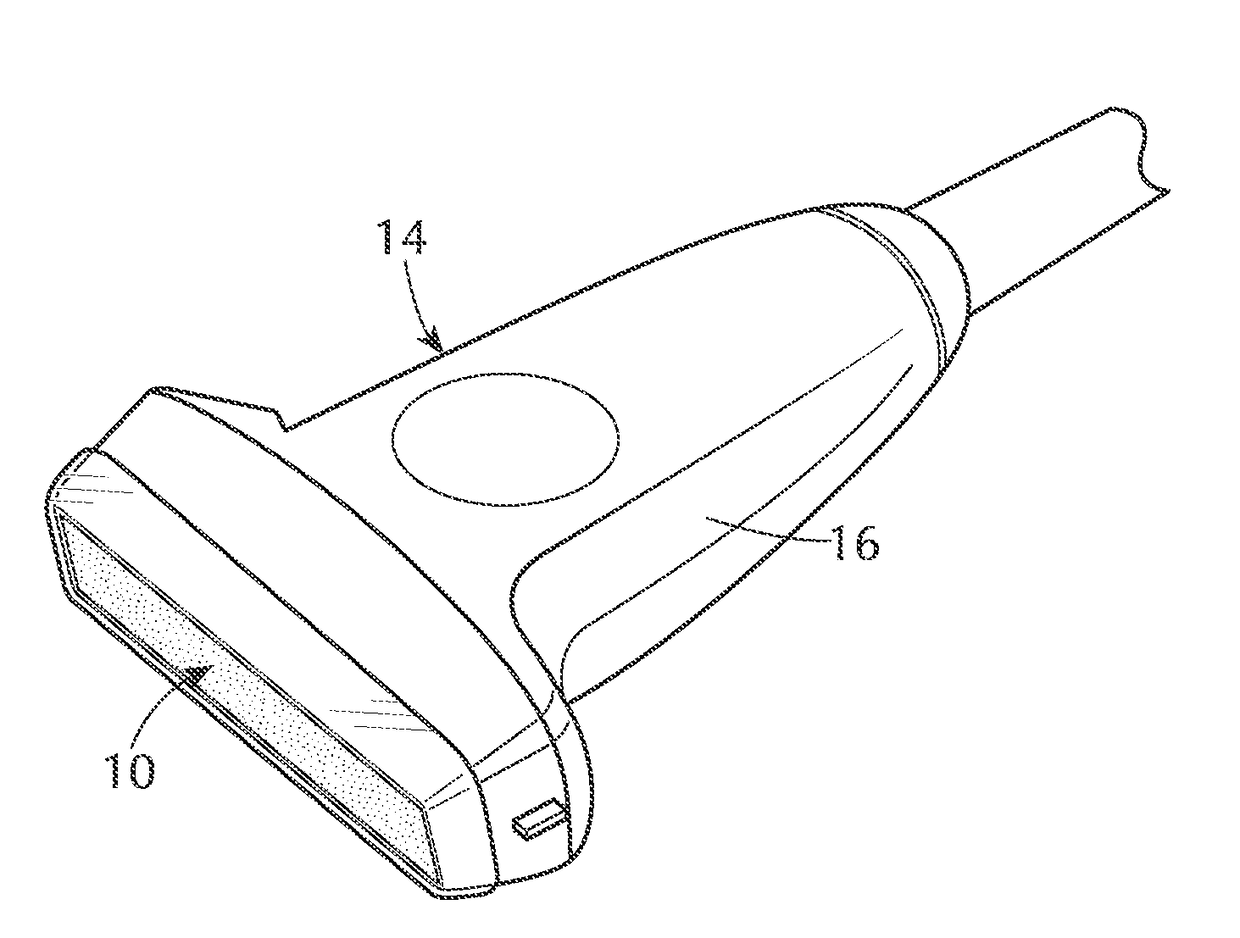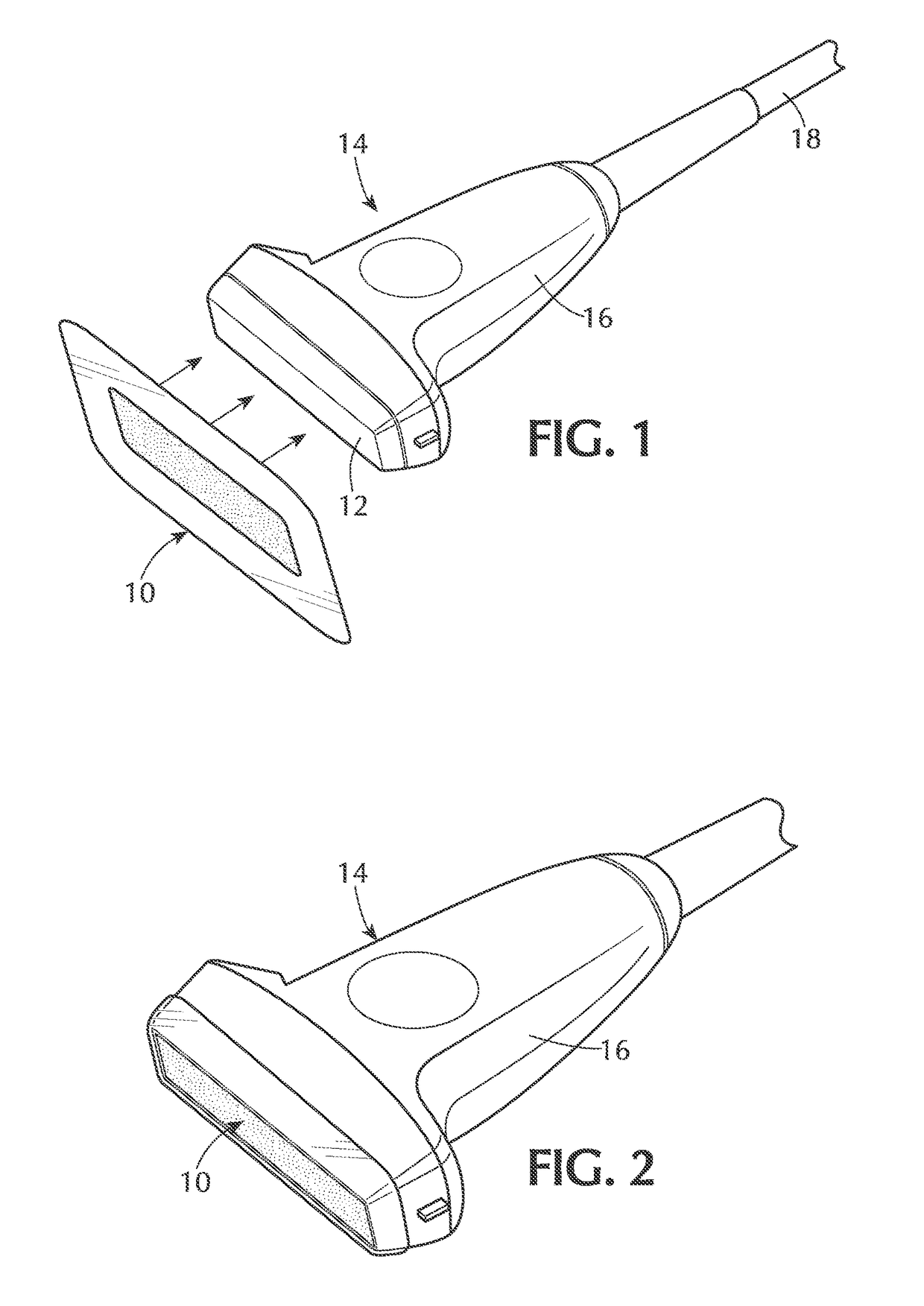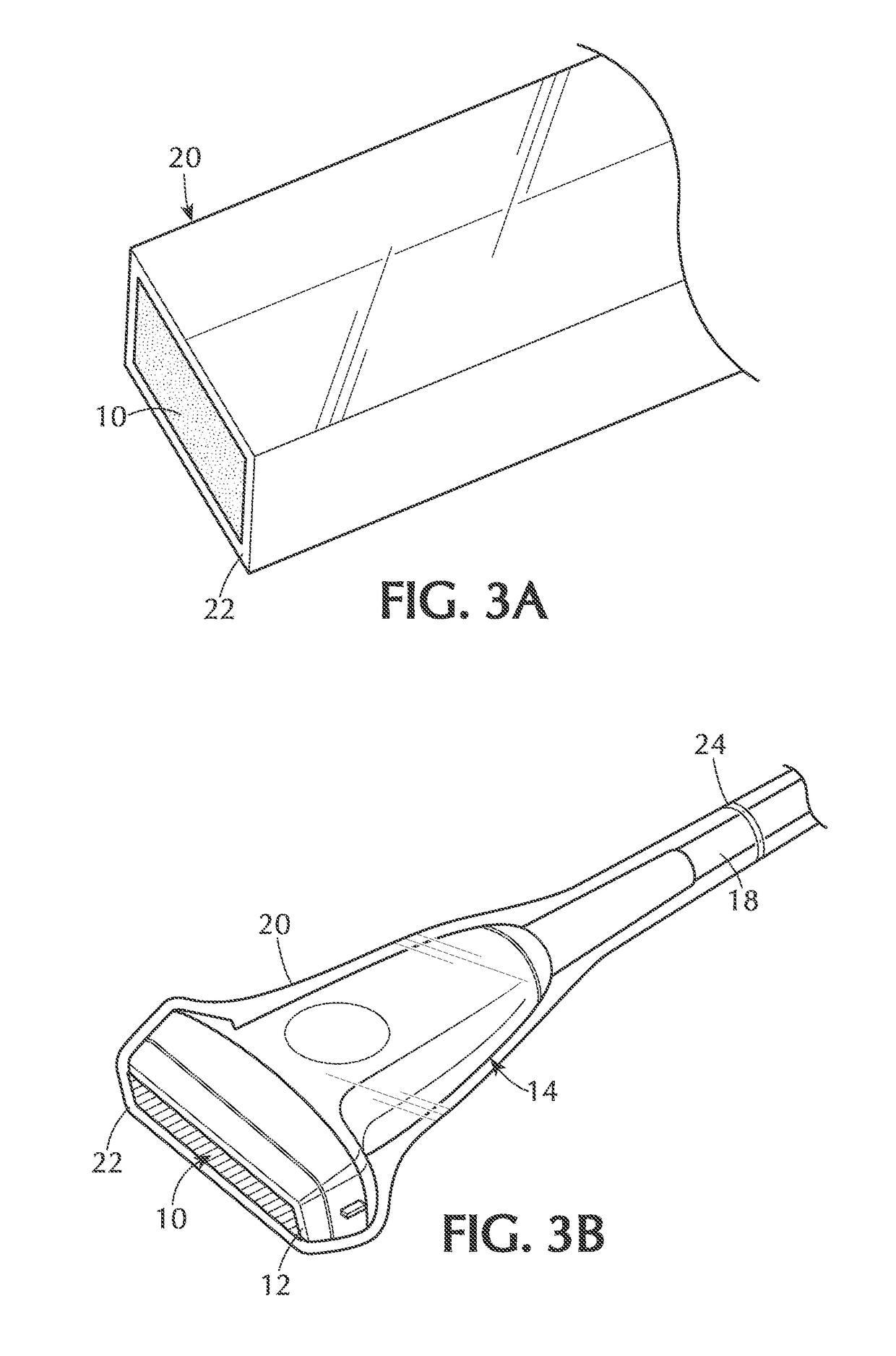Ultrashield devices and methods for use in ultrasonic procedures
a technology of ultrasonic procedures and ultrasonic shields, applied in the field of ultrasonic shield devices and methods for use in ultrasonic procedures, can solve the problems of difficult to remove from the patient, fluid or gel is difficult to contain on the patient, and cannot be readily achieved
- Summary
- Abstract
- Description
- Claims
- Application Information
AI Technical Summary
Benefits of technology
Problems solved by technology
Method used
Image
Examples
Embodiment Construction
[0055]Specific embodiments of the disclosed devices and methods will now be described with reference to the drawings.
[0056]Devices and methods are provided for specific use with ultrasound machines to enable a clinician or a technician to use a conventional ultrasound probe, such as to generate an ultrasonic image, without the need for external ultrasonic gel or similar couplant. In particular, an ultrashield is provided for use with a conventional ultrasound probe that eliminates the need for additional ultrasonic couplants, such as gels. The ultrashield is a cover or shield which is positioned over the faceplate of an ultrasound probe, either alone or in conjunction with a probe cover. FIG. 1 illustrates an embodiment of an ultrashield 10 which is sized and configured to affix to the faceplate 12 of an ultrasound probe 14, as indicated by arrows. Typically, the ultrashield 10 is sized and configured so that portions of its exterior edge wrap around the probe 14, beyond the facepla...
PUM
 Login to View More
Login to View More Abstract
Description
Claims
Application Information
 Login to View More
Login to View More - R&D
- Intellectual Property
- Life Sciences
- Materials
- Tech Scout
- Unparalleled Data Quality
- Higher Quality Content
- 60% Fewer Hallucinations
Browse by: Latest US Patents, China's latest patents, Technical Efficacy Thesaurus, Application Domain, Technology Topic, Popular Technical Reports.
© 2025 PatSnap. All rights reserved.Legal|Privacy policy|Modern Slavery Act Transparency Statement|Sitemap|About US| Contact US: help@patsnap.com



